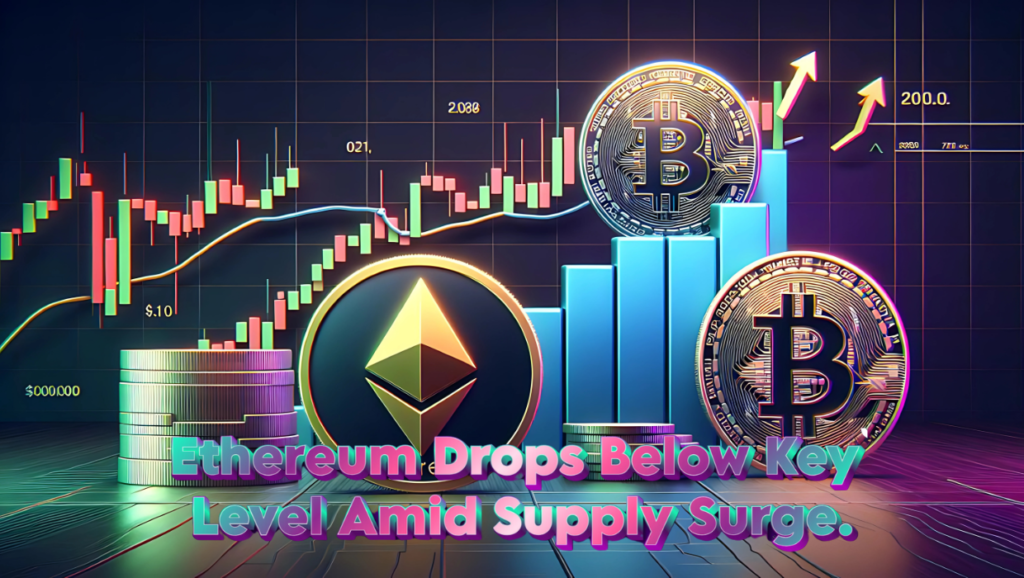
Table of Contents
- An increase in Ethereum's supply is blamed for the recent decline, which reversed the deflationary trend.
- The gloomy attitude in the cryptocurrency market is reflected in Ethereum's decline below the $3,087 support level.
Due to pessimistic sentiment in the cryptocurrency market as a whole, Ethereum’s price has dropped more than 15% in the last week. The primary cause of Ethereum’s present difficulties is a return to inflationary supply levels. In contrast to the deflationary climate it faced following the merger, the network’s supply has been rising since April 2024.
The Price Prospects for Ethereum
According to data from Ultrasound.money, the overall supply has increased by 0.37% over the last nine months, hitting 120.4 million ETH. Concerns regarding the asset’s price trend have been heightened by this increased supply and decreased demand.
Ethereum is clearly in a downward trend, having fallen below the $3,087 support level on TradingView’s 4-hour chart. Ethereum’s ability to sustain this support level is currently a crucial topic for investors, since failure to do so could result in further falls.

The price is also below the moving averages and the 50. The price may reverse before additional downward momentum is evident, though, as ETH’s Relative Strength Index (RSI) is at the oversold region of 22.
Before falling to its present level, the price of ether had been in a consolidation, ranging from a low of $3,189 to a high of $3,330. The price is currently above the 50-moving average on the daily chart, and the RSI is near the oversold zone at 32.
The price had been declining on the weekly chart for a longer period of time after reaching a peak of $4,010 on December 2. The recent decline in funding rates, which indicates growing pessimism among traders, is a noteworthy event.

Metrics on the Chain
However, according to statistics from CryptoQuant, funding rates have started to improve as Ethereum approaches the $3,000 support zone, suggesting that some traders are initiating long positions in expectation of a recovery.
The beginning of an Ethereum bull market may be indicated if these funding rates keep rising. There are still further downside possibilities, though, if the recovery stalls and the pessimism grows. The price of Ethereum is at a turning point, and its future is probably dependent on its ability to pick up steam.
FAQ
The recent decline in Ethereum’s price is primarily due to an increase in its supply, which has reversed the deflationary trend the network experienced following its merger. With Ethereum’s supply rising since April 2024 and reduced demand, the price has fallen below key support levels, reflecting a pessimistic sentiment in the overall cryptocurrency market.
Ethereum’s supply has increased by 0.37% over the last nine months, reaching 120.4 million ETH. This rise in supply, combined with weaker demand, has created an inflationary environment, which has put downward pressure on Ethereum’s price, reversing the earlier deflationary trend that was seen after the Ethereum merger.
While Ethereum’s price has been in a downward trend and is currently below moving averages, there are signs of potential recovery. The Relative Strength Index (RSI) is in the oversold region, which could suggest a reversal before further decline. Additionally, funding rates are showing improvement, indicating that some traders are starting to take long positions in anticipation of a potential price rebound.
If Ethereum’s price fails to hold the $3,000 support zone, there may be further downside risks. The price trend is currently at a critical point, and its future trajectory depends on whether Ethereum can regain momentum or if pessimism among traders continues to grow.
While Ethereum faces significant challenges with an increased supply and pessimistic sentiment, there is potential for a price recovery. If funding rates continue to improve and demand picks up, Ethereum could begin to show signs of a bull market. However, traders must remain cautious as the situation could evolve rapidly depending on market conditions.




 Bitcoin
Bitcoin  Ethereum
Ethereum  XRP
XRP  Tether
Tether  Solana
Solana  USDC
USDC  Dogecoin
Dogecoin  Cardano
Cardano  Lido Staked Ether
Lido Staked Ether  TRON
TRON  Avalanche
Avalanche  Toncoin
Toncoin  Shiba Inu
Shiba Inu  Pepe
Pepe